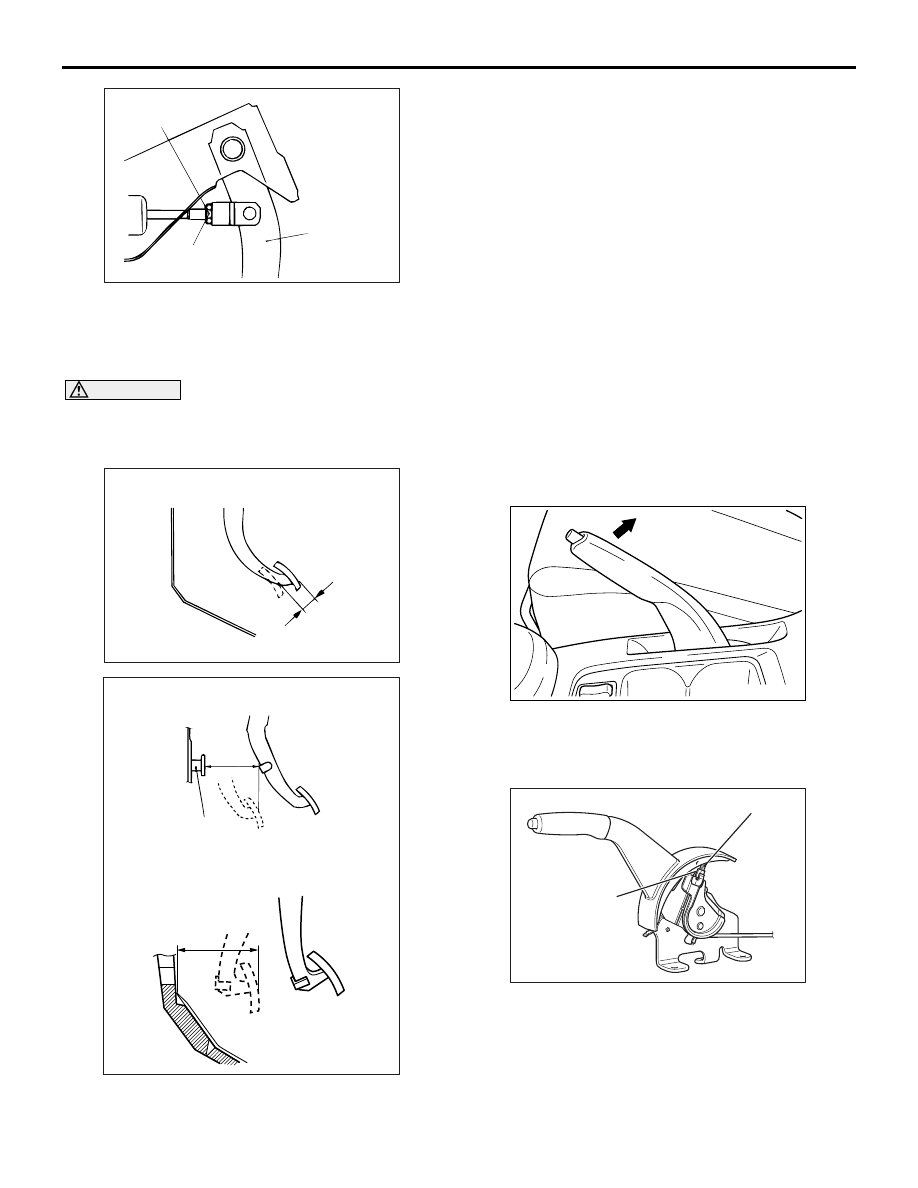Mitsubishi Lancer. Manual - part 71

OPERATIONS INSIDE THE VEHICLE
PERIODIC INSPECTION AND MAINTENANCE
2-20
4. If the clutch pedal height and clutch pedal clevis
pin play are not within the standard value, loosen
the setting nut to adjust the clutch pedal height
and clevis pin play to the standard value.
CAUTION
Do not push in the master cylinder pushrod at
this time, otherwise the clutch will not operate
properly.
5. After completing the adjustments, confirm that the
clutch pedal free play (measured at the face of the
pedal pad) and the distance between the clutch
pedal (the face of the pedal pad) and the clutch
pedal stopper or dash pad when the clutch is
disengaged are within the standard value ranges.
Standard value (C): 4
− 13 mm
Standard value (D): 105 mm or more
6. If the clutch pedal free play and the distance
between the clutch pedal and the clutch pedal
stopper or dash pad when the clutch is
disengaged do not agree with the standard
values, it is probably the result of either air in the
hydraulic system or a faulty master cylinder,
release cylinder or clutch. Bleed the air, or
disassemble and inspect the master cylinder,
release cylinder or clutch.
C2. CHECK PARKING BRAKE LEVER
STROKE AND PLAY
M6020400200119
1. Pull the parking brake lever with a force of approx.
200 N and count the number of notches.
Standard value: 5
− 7 notches
2. If the parking brake lever stroke is not the
standard value, adjust as described below.
(1) Remove the floor console assembly.
(2) Loosen the adjusting nut to move it to the
cable rod end so that the cable will be free.
AC100356
Setting nut
Clutch pedal
13 ± 2 N·m
AB
AC100355 AC
C
Clutch pedal free play
AC310575
<LH drive vehicles>
Clutch pedal
stopper
D
AB
<RH drive vehicles>
D
AC303998
AB
AC107239
Cable rod
Adjusting nut
AD